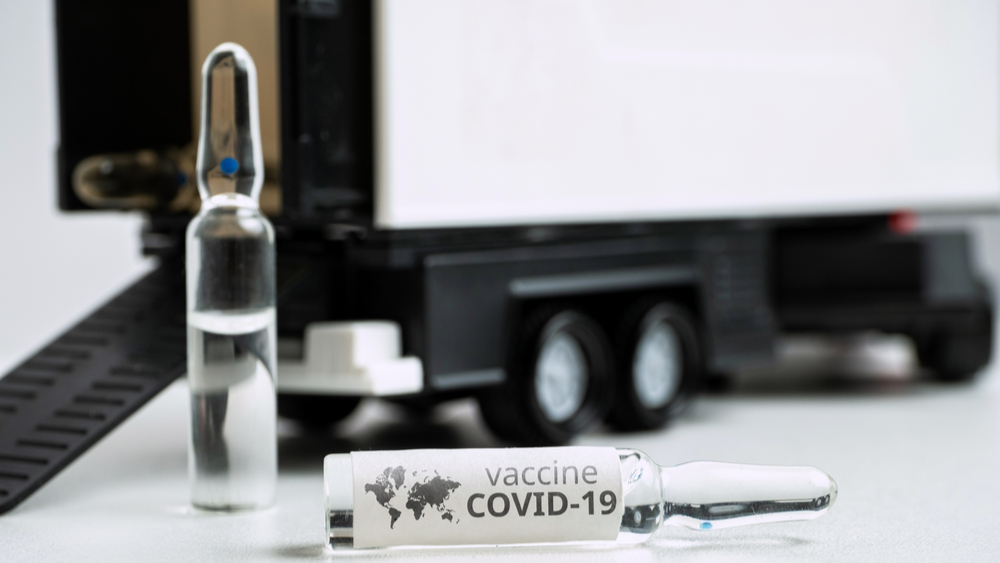Back to articles
Protecting COVID-19-vaccines

Will manufacturers and distributors manage to ship COVID-19 vaccines safely to all corners of the world? The challenge is not only the magnitude and urgency of the task. The temperature requirements of the COVID-19 vaccines is a massive burden for the production and distribution chain.
In response to the Covid-19 pandemic, targeted immunization programs around the world are working to develop a vaccine that will bring the virus under control. With many of the 100 Covid-19 vaccine candidates in the human trial phase, a safe and effective vaccine is near.
Some smaller trials have reported good results, and the World Health Organization (WHO) expects the results from much larger clinical trials of promising vaccines to be available in late 2020 or early 2021. An approved vaccine may, perhaps, be ready for widespread distribution by mid-2021.
Logistics challenges
Even when a Covid-19 vaccine is proven safe and effective, a global vaccine rollout will still present several logistical challenges. First, the vaccine must be approved by national regulators. Then huge quantities must be manufactured while meeting stringent standards. Finally, worldwide distribution is necessary to make it available to billions of people.
The distribution phase alone will require any successful version of a Covid-19 vaccine to be transported according to specific and sometimes extreme temperature requirements. In general, this means the vaccine must be kept chilled (between 2°C and 8°C) at all times. However, the promising vaccine from U.S. Pfizer (the first Covid-19 vaccine candidate submitted to the U.S. Food and Drug Administration (FDA) for emergency use authorization) must be stored at an unusually low -80°C.
Many vaccines have been shipped before, so these are not entirely new challenges. Logistical failures cause approximately 1.5 percent of all pharmaceutical shipments to be "marked as scrap." At the same time, temperature deviations cost the pharmaceutical industry an estimated $15 billion in product losses each year, according to multinational delivery services company, FedEx.
But the big difference from pre-pandemic to the present for manufacturers, distributors, and healthcare providers is the unprecedented scale, speed, and importance of the task at hand.
Vaccine temperature tracker
Because the vaccine's storage temperature is so essential, temperature tracking at all shipment stages is vital to ensure the vaccine remains viable.
IoT company SODAQ has developed a Proof-of-Concept (PoC) for containers designed explicitly for Covid-19 vaccine storage. The containers maintain a temperature between 2° and 8°C for at least 96 hours during transportation across the globe. The design can also handle different types of cooling boxes using liquid nitrogen or dry ice and a different temperature sensor, for storing vaccines at temperatures between -20 to -80°C.
SODAQ’s vaccine transport box features Nordic’s nRF9160 System-in-Package (SiP). It remotely tracks the position and monitors the shipment temperature in near real-time via a Cloud-based platform.
If traditional trackers were attached to the outside of each vaccine transportation box, it would be impossible to stack boxes efficiently and ensure the sensors were not prone to damage. Inserting a device into the box itself is also out of the question, as the water and aluminum foil keeping the box cool block RF signals.
SODAQ attempts to solve this problem by inserting a thin temperature sensor between the cardboard layers making up the transport box’s structure. The SODAQ solution integrates a rechargeable standard lithium battery, the Nordic SiP, temperature sensor, USB recharge connector, and antenna. At 6mm, the battery is the thickest part of the tracker, enabling it to easily slide between the layers.
Cellular IoT-enabled pilot
As a pilot, SODAQ completed 50 single shipments to various European countries such as the U.K., Germany, France, Spain, Italy and Poland, as well as the U.S. and Canada. It involved tracking the location and temperature of vaccine shipment containers from Germany-based insulation technology company, va-Q-tec, among others. The test included recharging the device, reusing the device on the same box, and reusing the device on a new box.
In all countries, the device was reliably connected using cellular IoT, an LPWAN technology supported by two versions, LTE-M and NB-IoT. These networks' presence enables simple and secure wireless connectivity for monitoring valuable assets throughout the distribution process, including pharmaceutical products.
For shipping vaccines to different environments, alternative technologies such as beacons or RFID often prove less effective than cellular IoT-based solutions.
Nordic-powered connectivity
The SODAQ solution leverages the power of cellular IoT by integrating the multimode (LTE-M/NB-IoT) capable nRF9160 SiP. The Nordic SiP provides this robust wireless connectivity for the tracker to relay the critical vaccine location and temperature data to the Cloud.
The SiP’s low power consumption extends battery life allowing the shipment box to be used for long journeys. In addition, the SiP’s compact dimensions suit the small form factor asset trackers popular in the transportation and logistics sector.
The low weight and compact size make the vaccine temperature tracker particularly suitable for use on airplanes.


